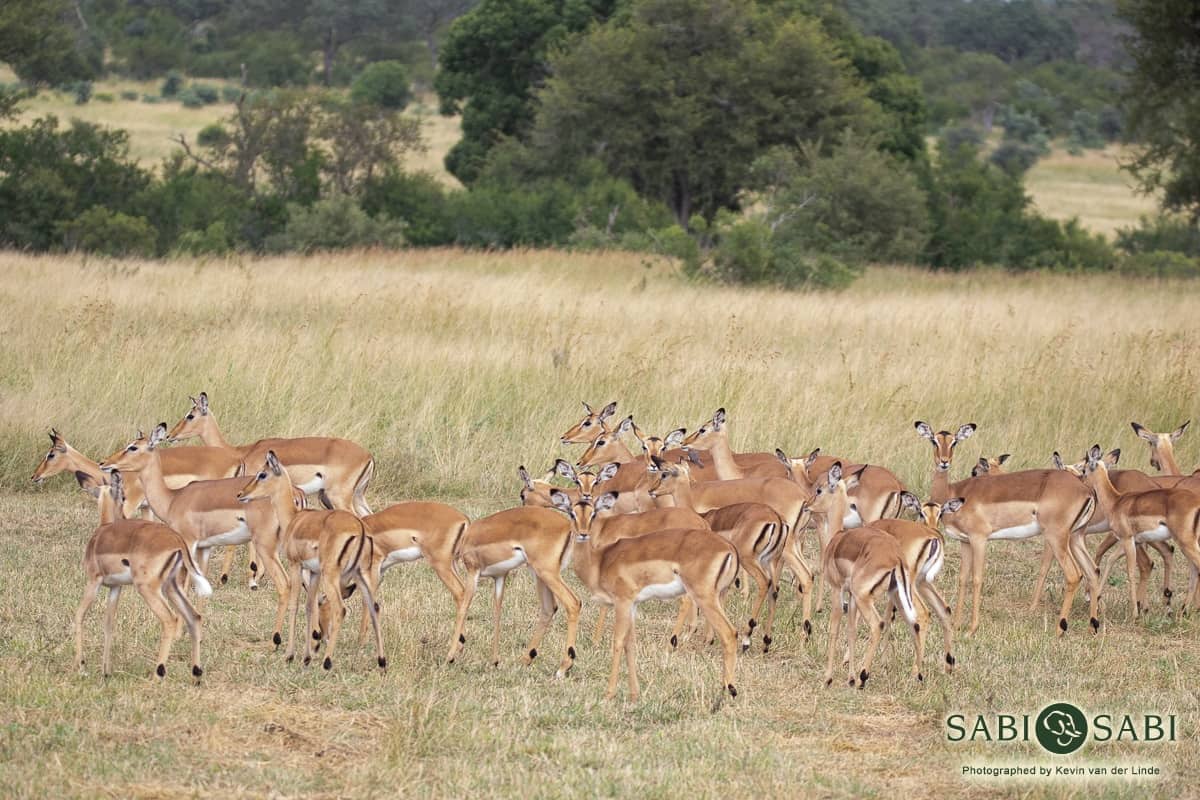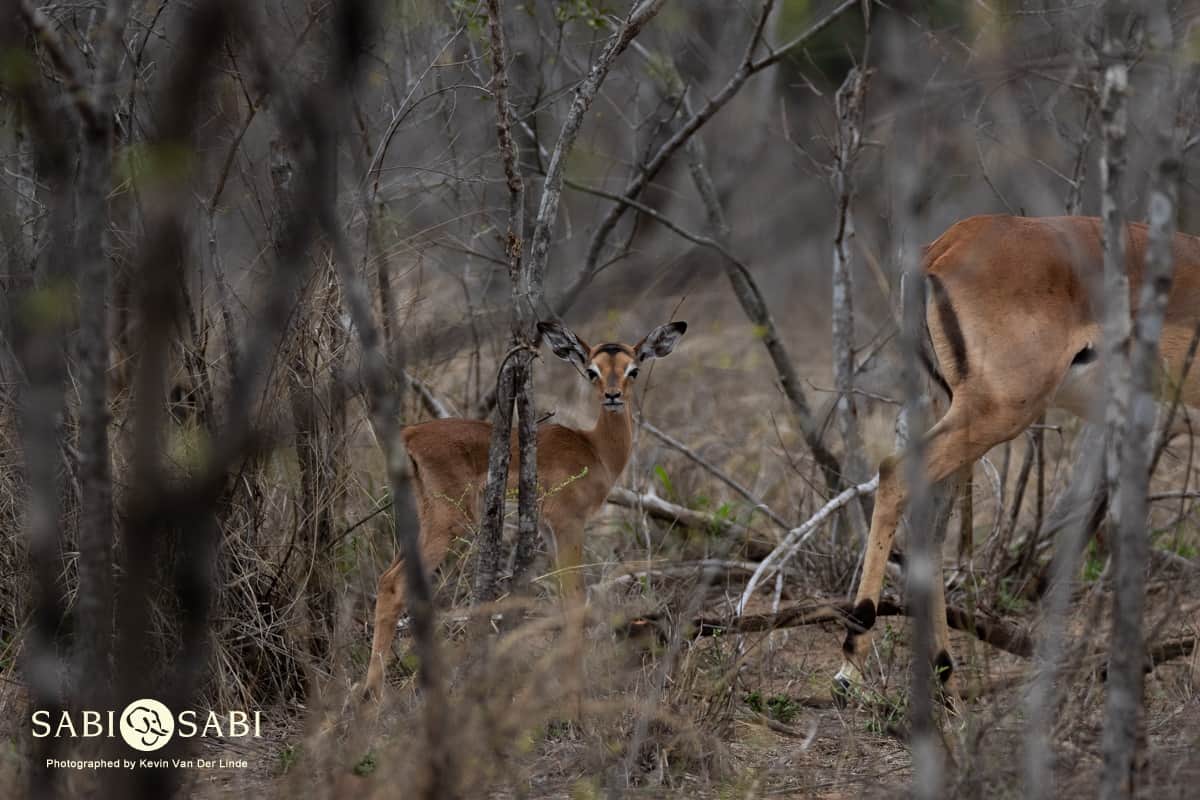Impala
on Apr 18, 2019Species Name: Impala
Scientific Name: Aepyceros melampus
Weight: Male – 60kg Female – 40kg
Height: 900mm
General habitat: Woodland savannahs
Diet: Mixed feeders; pods, seeds, leaves and grass
Gestastion: 6-7 months
Lifespan: 12 years

Impalas are undoubtably the most common mammal that you will get to view during your stay with us at Sabi Sabi. They are often referred to as the ‘McDonalds’ of the bush because of the black M-marking they have on their rears, and because they are food for all predators out here. Even though they are so numerous, one can not help but stop and admire their beauty. Impala have 3 different social structures - a breeding herd consisting of anything between 6-50 or more individuals; a bachelor herd consisting of different aged males; and lastly solitary males. Impala are often seen mixing in with other herbivores such as zebra, giraffe and wildebeest. This gives all species a better chance at survival with more eyes and ears to alert them of danger.
Moving into the end of the rainy season, April – May, the days start becoming shorter and the nights longer which spikes testosterone levels in the rams. They start fighting over territories and take control over females within that territory. The fights can sometimes be lethal but mostly, the ram that loses, will be driven away with the victor with loud snorts and grunts being sounded. This is also labelled as the rutting season which can last up to 3 weeks. Once there is an overall winner, each harem having their own leader, he will proceed to mate with as many females as he can but never mating with the same female more than once.
The females have a 6-7 month gestation period and after that, comes another one of nature's wonders. On the onset of the rainy season, around November, the females give birth within about a 2-week period of each other and we witness the ‘baby boom’. Young impala calves everywhere and it is a breath-taking view.
That being said, it is also an opportune time for predators to secure an easy meal as these youngsters are very vulnerable, even though they are up and about a few minutes after being born. Impala are preyed upon by many predators. Calves will fall victim to lion, leopard, cheetah, wild dog, Martial eagle, baboons, jackal and even a large African rock python. Adults will be consumed by the big cats and wild dog.
My memorable sighting
My most memorable sighting of impala must be of the birth of a young calf. I didn’t manage to see the birth itself, but as myself and Sydney rounded a corner, Sydney pointed at a female impala that was eating something strange. Upon closer inspection she was in fact consuming the afterbirth. They do this so that no predators will be attracted by the smell of it and it also replenishes nutrients which she may have lost. Right beside her lay a tiny calf which had not even taken its first steps yet. We must have sat for an hour watching the little one stumble around on its tiny new legs. Her mother finished off the remains of afterbirth and headed into the bush for cover. It was amazing to witness as it was a first for me and definitely for our guests too.
Photo & Video Content












